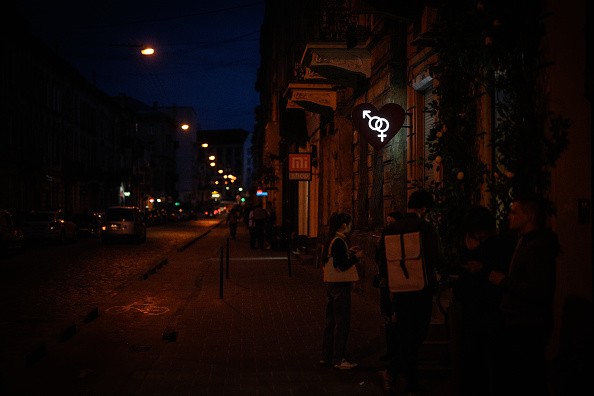Biologists say nighttime light pollution can interfere with the remarkable navigational abilities of monarchs, which travel as far as Canada to Mexico and back during their multi-generational migration.
Researchers found that butterflies roosting at night near artificial illumination such as a porch or streetlight can become disoriented the next day because the light interferes with their circadian rhythms.
Artificial light can impede the molecular processes responsible for the butterfly's remarkable navigational ability and trigger the butterfly to take wing when it should be resting.
Light pollution affects monarch butterflies
 (Photo : Leon Neal/Getty Images)
(Photo : Leon Neal/Getty Images)

According to biologists, evening light pollution can interfere with monarchs' extraordinary navigational abilities, which allow them to travel as far as Canada to Mexico and back throughout their multigenerational trips.
Researchers discovered that butterflies roosting at night near artificial lightings, such as a porch or streetlight, can get disoriented the next day because the light disrupts their circadian cycles.
Artificial light can disrupt the chemical mechanisms that allow the butterfly to navigate so well and cause it to take flight when it should be resting.
With their unpredictable, meandering motions sweeping them over your lawn, it's difficult to envision monarch butterflies adhering to a strict flight plan. However, some monarch populations migrate thousands of kilometers to the same woods in Mexico where they spend the winter.
Researchers are now investigating if light pollution is hampering this incredible cross-country journey.
"It's an essential subject since many migrants travel through cities," said co-author and UC master's graduate Samuel Stratton, as per ScienceDaily.
"Getting some ecological data would be extremely beneficial in determining the effects of light pollution on orientation and migratory outcomes."
Monarch butterflies rely on the darkness of night to digest proteins that are essential to their internal compass.
Millions of monarch butterflies migrate east across the Rocky Mountains from their summer breeding areas in southern Canada and the northern United States, covering distances of up to 2,500 miles (4,000 kilometers) to overwintering grounds in Mexico.
Monarch butterflies may carry up to five generations across the continent and return. They utilize an internal clock to inform them where to orient themselves concerning the shifting position of the sun in the sky as they travel.
However, monarchs subjected to nocturnal light pollution, such as a street lamp above their preferred roost in a cedar tree, may undergo a phase shift, causing their body to believe it is either sooner or later than it is. According to UC researchers, this can throw off their perception of time.
Read more: Artificial Light Pollution: What is It and How Does it Affect our Environment?
Light pollution
Humans and their creations are responsible for the majority of environmental damage on Earth. Consider the vehicle or that marvelous man-made substance, plastic, as per National Geographic.
Automobile emissions are now a major source of air pollution that contributes to climate change, and plastics pollute our oceans, posing a substantial health risk to marine wildlife.
Electric light may be a lovely thing, leading us home as the sun sets, keeping us secure, and making our houses comfortable and cheerful.
However, like with carbon dioxide emissions and plastic, too much of a good thing has begun to harm the ecosystem.
Light pollution, or the excessive or inappropriate use of artificial light in the outdoors, has an impact on human health, wildlife behavior, and our ability to see stars and other celestial objects.
Light pollution is a worldwide problem. The World Atlas of Night Sky Brightness, a computer-generated atlas based on hundreds of satellite photographs, made this very clear in 2016.
The atlas, which is viewable online, depicts how and where our planet is illuminated at night.
Large portions of North America, Europe, the Middle East, and Asia are illuminated, with only the most distant sections of the planet (Siberia, the Sahara, and the Amazon) completely dark.
Singapore, Qatar, and Kuwait are among the most light-polluted countries on the planet.
Related article: Light Pollution: LED Streetlights Contribute to Moth Decline in England
© 2024 NatureWorldNews.com All rights reserved. Do not reproduce without permission.





